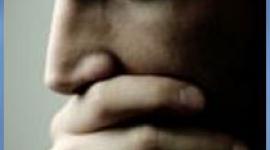Medication and Therapy for Treating Bipolar Disorder in Children
Detailed overview of medications used to treat childhood bipolar disorder plus their side-effects plus the important role of therapy.
 Few controlled studies have been done on the use of psychiatric medications in children. The U.S. Food and Drug Administration (FDA) has approved only a handful for pediatric use. Psychiatrists must adapt what they know about treating adults to children and adolescents.
Few controlled studies have been done on the use of psychiatric medications in children. The U.S. Food and Drug Administration (FDA) has approved only a handful for pediatric use. Psychiatrists must adapt what they know about treating adults to children and adolescents.
Medications used to treat adults are often helpful in stabilizing mood in children. Most doctors start medication immediately upon diagnosis if both parents agree. If one parent disagrees, a short period of watchful waiting and charting of symptoms can be helpful. Treatment should not be postponed for long, however, because of the risk of suicide and school failure.
A symptomatic child should never be left unsupervised. If parental disagreement makes treatment impossible, as may happen in families undergoing divorce, a court order regarding treatment may be necessary.
Other treatments, such as psychotherapy, may not be effective until mood stabilization occurs. In fact, stimulants and antidepressants given without a mood stabilizer (often the result of misdiagnosis) can cause havoc in bipolar children, potentially inducing mania, more frequent cycling, and increases in aggressive outbursts.
No one bipolar medication works in all children. The family should expect a trial-and-error process lasting weeks, months, or longer as doctors try several medications alone and in combination before they find the best treatment for your child. It is important not to become discouraged during the initial treatment phase. Two or more mood stabilizers, plus additional medications for symptoms that remain, are often necessary to achieve and maintain stability.
Parents often find it hard to accept that their child has a chronic condition that may require treatment with several medications. It is important to remember that untreated bipolar disorder has a fatality rate of 18 percent or more (from suicide), equal to or greater than that for many serious physical illnesses. The untreated disorder carries the risk of drug and alcohol addiction, damaged relationships, school failure, and difficulty finding and holding jobs. The risks of not treating are substantial and must be measured against the unknown risks of using medications whose safety and efficacy have been established in adults, but not yet in children.
The following is a brief overview of medications used to treat childhood bipolar disorder. More information about specific medications is available in the Drug Database.
This brief overview is not intended to replace the evaluation and treatment of any child by a physician. Be sure to consult with a doctor who knows your child before starting, stopping, or changing any medication.
Mood Stablizers
- Lithium (Eskalith, Lithobid, lithium carbonate) - A salt that occurs naturally in the earth, lithium has been used successfully for decades to calm mania and prevent mood cycling. Lithium has a proven anti-suicidal effect. An estimated 70 to 80 percent of adult bipolar patients respond positively to lithium treatment. Some children do well on lithium, but others do better on other mood stabilizers. Lithium is often used in combination with another mood stabilizer.
- Divalproex sodium or valproic acid (Depakote) - Doctors frequently prescribe this anti-convulsant for children who have rapid cycling between mania and depression.
- Carbamazepine (Tegretol) - Doctors prescribe this anti-convulsant because of its anti-manic and anti-aggressive properties. It is useful in treating frequent rage attacks.
- Gabapentin (Neurontin) - This is a newer anti-convulsant drug that seems to have fewer side effects than other mood stabilizers. However, doctors do not know how effective this drug is, and some parents report activation of manic symptoms in young children.
- Lamotrigine (Lamictal) - This newer anti-convulsant medicine can be effective in controlling rapid cycling. It seems to work well in the depressive, as well as the manic, phase of bipolar disorder. Any appearance of rash must be immediately reported to the doctor, as a rare but severe side-effect may occur (for this reason Lamictal is not used in children under l6).
- Topiramate (Topamax) -This newer anti-convulsant drug may control rapid-cycling and mixed bipolar states in patients who have not responded well to divalproex sodium or carbamazepine. Unlike other mood stabilizers, it does not have weight gain as a side effect, but its efficacy in children has not been established.
- Tiagabine (Gabitril) - This newer anti-convulsant drug has FDA approval for use in adolescents and is now being used in children as well.
Valproate (Depakote) Use Warning - National Institute of Mental Health
According to studies conducted in Finland in patients with epilepsy, valproate may increase testosterone levels in teenage girls and produce polycystic ovary syndrome in women who began taking the medication before age 20. Increased testosterone can lead to polycystic ovary syndrome with irregular or absent menses, obesity, and abnormal growth of hair. Therefore, young female patients taking valproate should be monitored carefully by a physician.
Other Medications for Treating Bipolar Disorder
Doctors may prescribe antipsychotic medications (Risperdal, Zyprexa, Abilify, Seroquel) for use during manic states, particularly when children experience delusions or hallucinations and when rapid control of mania is needed. Some of the newer antipsychotic medications are very effective in controlling rages and aggression. Weight gain is often a side effect of anti-psychotic medications.
Calcium channel blockers (verapamil, nimodipine, isradipine) have recently received attention as potential mood stabilizers for treating acute mania, ultra-ultra-rapid cycling, and recurrent depression.
Anti-anxiety medications (Klonopin, Xanax, Buspar, and Ativan) decrease anxiety by diminishing activity in brain arousal systems. They reduce agitation and over-activity, and help promote standard sleep. Doctors commonly use these medications as add-ons to mood stabilizers and antipsychotic drugs in acute mania.
A Cautionary Note on Antidepressants and Stimulants from the National Institute of Mental Health
Effective treatment depends on appropriate diagnosis of bipolar disorder in children and adolescents. There is some evidence that using antidepressant medication to treat depression in a person who has bipolar disorder may induce manic symptoms if it is taken without a mood stabilizer. In addition, using stimulant medications to treat attention deficit hyperactivity disorder (ADHD) or ADHD-like symptoms in a child with bipolar disorder may worsen manic symptoms. While it can be hard to determine which young patients will become manic, there is a greater likelihood among children and adolescents who have a family history of bipolar disorder. If manic symptoms develop or markedly worsen during antidepressant or stimulant use, a physician should be consulted immediately, and diagnosis and treatment for bipolar disorder should be considered.
Side-Effects of Bipolar Medications
Side effects that are particularly troublesome and that are worse in children include the following: Atypical neuroleptics (except aripiprazloe) are associated with marked weight gain in many children. One day we hope to have specific genetic tests that will tell us beforehand which people will gain weight on these medications. But right now, it is trial and error. The dangers of this weight gain include glucose problems that may include the onset of diabetes and increased blood lipids that may worsen heart and stroke problems later in life. In addition, these drugs can cause an illness called tardive dyskinesia, which is irreversible, unsightly, repeated movements of the tongue in and out of the mouth or cheek and some other movement abnormalities. Depakote may also be associated with increased weight and possibly with a disease called polycystic ovarian syndrome (POS). In some cases POS is associated with infertility later in life. Lithium has been the market the longest and is the only medication that has been shown to be effective against future episodes of mania and of depression and of completed suicides. Some people who take lithium over a long time will need a thyroid supplement and in rare cases may develop serious kidney disease.
It is very important that children on these bipolar medications be monitored for the development of serious side effects. These side effects need to be weighed against the dangers of the manic-depressive illness itself, which can rob children of their childhood.
Psychotherapy
In addition to seeing a child psychiatrist, the treatment plan for a child with bipolar disorder usually includes regular therapy sessions with a licensed clinical social worker, a licensed psychologist, or a psychiatrist who provides psychotherapy. Cognitive behavioral therapy, interpersonal therapy, and multi-family support groups are an essential part of treatment for children and adolescents with bipolar disorder. A support group for the child or adolescent with the disorder can also be beneficial, although few exist.
Therapeutic Parenting™
Parents of children with bipolar disorder have discovered numerous techniques that the Child and Adolescent Bipolar Foundation refers to as therapeutic parenting. These techniques help calm their children when they are symptomatic and can help prevent and contain relapses. Such techniques include:
- practicing and teaching their child relaxation techniques
- using firm restraint holds to contain rages
- prioritizing battles and letting go of less important matters
- reducing stress in the home, including learning and using good listening and communication skills
- using music and sound, lighting, water, and massage to assist the child with waking, falling asleep, and relaxation
- becoming an advocate for stress reduction and other accommodations at school
- helping the child anticipate and avoid, or prepare for stressful situations by developing coping strategies beforehand
- engaging the child's creativity through activities that express and channel their gifts and strengths
- providing routine structure and a great deal of freedom within limits
- removing objects from the home (or locking them in a safe place) that could be used to harm self or others during a rage, especially guns; keeping medications in a locked cabinet or box.
Sources:
- NIMH, Child and Adolescent Bipolar Disorder: An Update from the National Institute of Mental Health (last reviewed June 2008)
- Papolos DF, Papolos J: The Bipolar Child: The Definitive and Reassuring Guide to Childhood's Most Misunderstood Disorder, 3rd ed. New York, NY, Broadway Books, 2006.
- Child and Adolescent Bipolar Foundation website
- NAMI website, Facts About Child and Adolescent Bipolar Disorder (last reviewed Jan. 2004).
next: Living with Bipolar As A Teen: Dealing with School
~ bipolar disorder library
~ all bipolar disorder articles
APA Reference
Staff, H.
(2008, October 21). Medication and Therapy for Treating Bipolar Disorder in Children, HealthyPlace. Retrieved
on 2025, March 26 from https://www.healthyplace.com/bipolar-disorder/articles/medication-and-therapy-for-treating-bipolar-disorder-in-children



